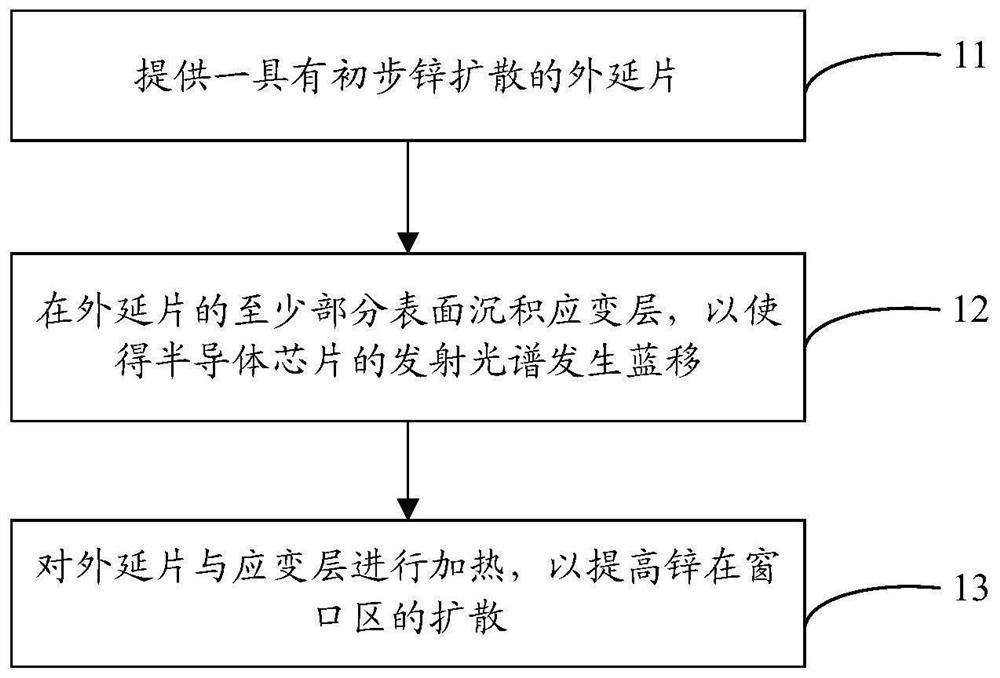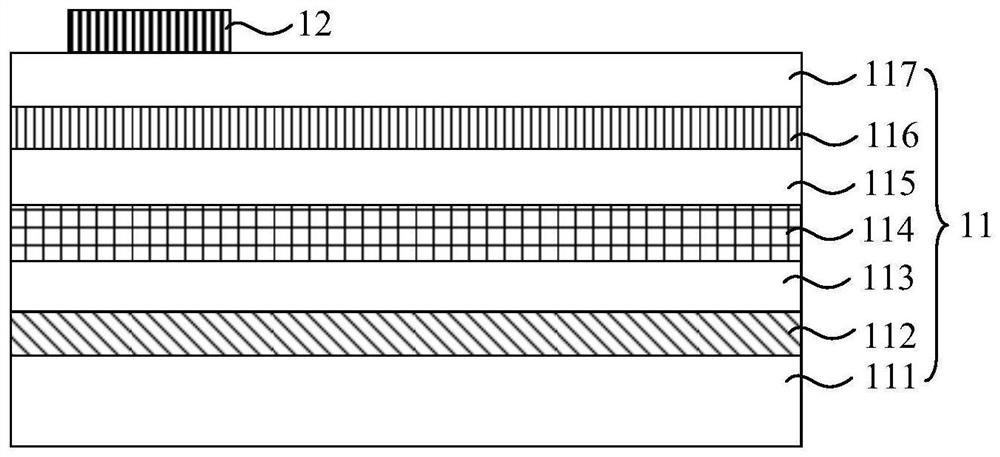Manufacturing method of semiconductor chip and laser
A manufacturing method and semiconductor technology, applied in the laser field, can solve the problems of reducing the luminous efficiency of the laser, reducing the working efficiency of the device, reducing the light absorption, etc., and achieving the effects of improving the anti-COD ability, improving the production efficiency, and shortening the diffusion time.
- Summary
- Abstract
- Description
- Claims
- Application Information
AI Technical Summary
Problems solved by technology
Method used
Image
Examples
Embodiment Construction
[0020] The following will clearly and completely describe the technical solutions in the embodiments of the present application with reference to the drawings in the embodiments of the present application. Obviously, the described embodiments are only some of the embodiments of the present application, not all of them. Based on the embodiments in this application, all other embodiments obtained by persons of ordinary skill in the art without making creative efforts belong to the scope of protection of this application.
[0021] Please refer to Figure 1 to Figure 3 , figure 1 It is a schematic flow chart of an embodiment of a method for manufacturing a semiconductor chip provided by the present application, the method comprising:
[0022] Step 11: Providing an epitaxial wafer with preliminary zinc diffusion.
[0023] like figure 2 As shown, the epitaxial wafer 11 includes an N-type substrate 111, an N-type cladding layer 112, a first waveguide layer 113, a quantum well lay...
PUM
| Property | Measurement | Unit |
|---|---|---|
| thickness | aaaaa | aaaaa |
| thickness | aaaaa | aaaaa |
| thickness | aaaaa | aaaaa |
Abstract
Description
Claims
Application Information
 Login to View More
Login to View More - R&D
- Intellectual Property
- Life Sciences
- Materials
- Tech Scout
- Unparalleled Data Quality
- Higher Quality Content
- 60% Fewer Hallucinations
Browse by: Latest US Patents, China's latest patents, Technical Efficacy Thesaurus, Application Domain, Technology Topic, Popular Technical Reports.
© 2025 PatSnap. All rights reserved.Legal|Privacy policy|Modern Slavery Act Transparency Statement|Sitemap|About US| Contact US: help@patsnap.com



